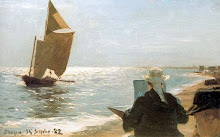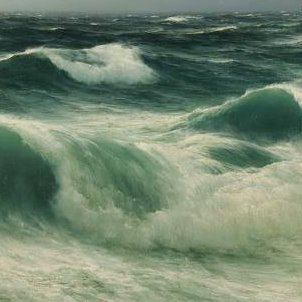Norwegian painter, Peder Balke (November 4, 1804 – 1887), hiked around his native Norway, sketching the landscape; later using the sketches as the basis for studio oil paintings, in a romantic style.
This was the way landscape painters worked at that time. In any case, the inclemency of the Scandinavian climate would not have lent itself to completing works on site for most of the year.
Plein air painting is more the norm these days, but there are some advantages to developing paintings from field sketches: the finished work tends to be less literal and more 'essential'. The artist has to rely more on memory, which may infuse the painting with greater emotional depth. We tend to remember the essence of a place, rather than details. Also, it's difficult to complete large canvases on site.








































